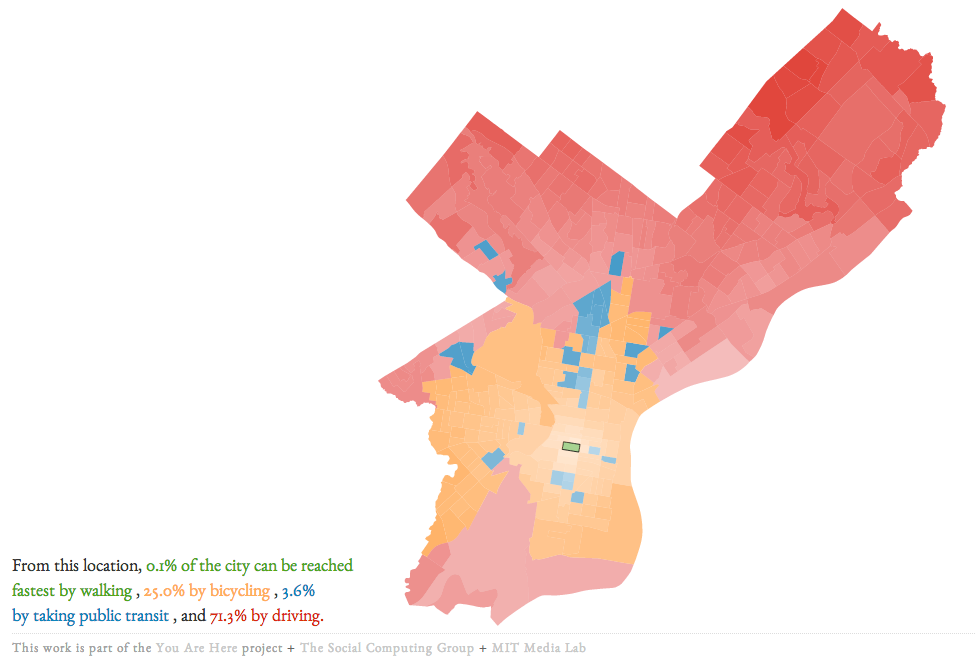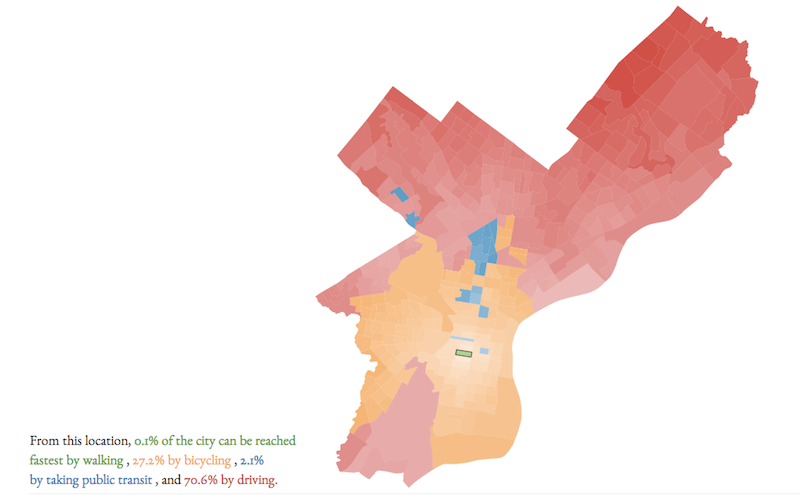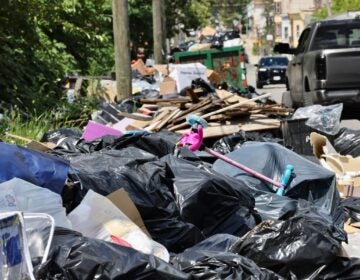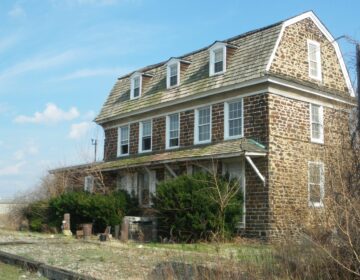Biking is the fastest way to get around Center City. Should cyclists get more right-of-way?

A fun, new web tool created by MIT’s Social Computing Group called You Are Here has been making the rounds in the local blogosphere, and it purports to show the fastest kind of transportation to use to access different parts of the city – walking, biking, transit, or car.
To the extent that we can generalize about this, the results show an interesting pattern: while driving a car is the fastest way to make long trips diagonally across the city, bikes turn out to be the fastest option for shorter trips within greater Center City.
Here’s one example:

What should be the policy takeaway from this?
Holly Otterbein at Newsworks points out that even though biking is the fastest mode, only about 2% of Philadelphians bike to work. Cycling is the fastest growing mode of commuting in the city, but cyclists’ ranks are still pretty small in absolute terms. What would get more people using the fastest mode for short-to-medium length trips?
Rina Cutler, Philadelphia’s Deputy Mayor of Transportation and Utilities, told Otterbein she thinks physically protected bike lanes would draw out more cyclists, but the city isn’t building them because of parking politics.
Rina Cutler, Philadelphia’s deputy mayor of transportation and utilities, said many residents are interested in jumping on the bike bandwagon, but are worried about their safety.
“There’s not going to be a comfort level riding on city streets until we really start building protected bike lanes,” she said. “That’s a little more complicated and makes people a lot more politically nervous because usually it means you need to either take out some parking or relocate the parking.”

The modernist values of the Highway Capacity Manual, which many city transportation engineers have been trained on, favor long trips over short trips, fast speeds over slow speeds, and moving cars over moving people, while the urbanist political values favor the reverse.
Someone operating from the urbanist value system would look at this map and say that since bikes are the fastest way to move people around Center City, and since short trips deserve priority over long trips, and since slower car traffic speeds are a desirable result of protected bike lanes, more of the right-of-way on the public streets in Center City should be allocated to bikes, and less to parked cars.
Someone with modernist values would look at this map and say that long car trips from the periphery into the core, or commutes from the core to the suburbs, deserve priority status over short trips within the city. And because long trips deserve priority, curb parking is a better use of right-of-way on the public streets in Center City than protected bike lanes are.
What do you think the top priority for our street network should be?
Many Philadelphians (about 36%) commute out of the city for work every day, so some city transportation planners think the top priority should be to facilitate easy movement of cars into and out of the city. Others believe local trips on bike or foot should take priority over long commuting trips, and that designing local streets for slower speeds is an economic development strategy that will improve neighborhood commercial corridors.
WHYY is your source for fact-based, in-depth journalism and information. As a nonprofit organization, we rely on financial support from readers like you. Please give today.






